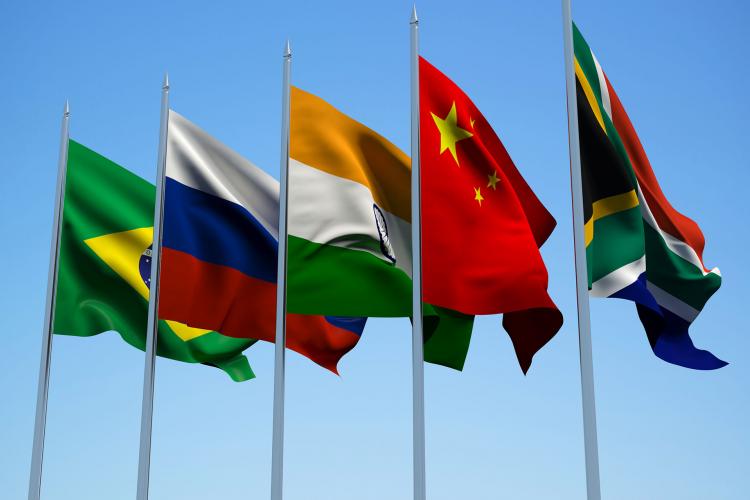At Parkview, we are finding it increasingly difficult to justify an allocation to “Emerging Markets” as an asset class (EM). This isn’t a tactical change in position, but a structural change of view. There are both positive and negative developments that lead us to this change in positioning. Over the next few quarters we plan to shift out of emerging market funds and to focus on only a few countries and regions where the investment case remains strong.
Since the early 1990s, emerging markets have become an increasingly important source of return and diversification for investors. The resolution of the defaulted bank loans in the 1980s via the creation of the Brady Bonds, created a liquid and diverse market in emerging market hard currency debt. This also coincided with the time that investors started looking beyond traditional developed markets for equity investments. MSCI created the first index for EM equities in the late 1980s.
Most emerging markets have transformed beyond recognition over the past 30 years. EM debt is no longer a high-risk asset class where all issuers are sub-investment grade. Emerging equity markets have also grown. Many of the largest companies by market capitalization do not derive most of their earnings from their respective local economies. Rather, they are global companies, whose fortunes are tied to global trade and overseas growth.
EM, by definition, is a transitory appellation. A country cannot be “emerging” forever. Indeed, some countries – Chile, for example – have graduated from the “Emerging Market” to “Advanced Economy” indexes. This raises the question of what, exactly, are Emerging Markets and why should they constitute an asset class?
To define EM as an asset class, one must look at the common elements of the economies in question. The criteria used to include certain markets related to their level of economic development – generally represented by GDP per capita – as well as other criteria related to the liquidity of the market. Qualitative criteria are also applied. For example, political risk and corporate governance standards are generally seen as holding Taiwan and Korea back from being recognised as advanced economies, even though quantitative criteria would suggest otherwise.
Thinking of EM as an “asset class” made a lot of sense at a time when these diverse, growing economies had a lot in common. Productivity growth was substantially higher than advanced economies, as many economies were “catching up”. The less liquid nature of the markets meant foreign investor flows had an outsized impact on domestic conditions. This implied that there was a meaningful correlation between the different markets, even if their economic cycles where not synchronized. As EM evolved, however, the nature of their markets also evolved.
In the debt markets, many sovereign issuers have been able to gain investment grade ratings. This reduced the volatility of their bonds, increased their appeal to a broader set of investors and thereby reduced their correlation with other emerging markets. A growing domestic base of institutional investors enabled greater issuance of domestic currency bonds.
In the equity markets, the changes are starker. Economies have evolved at varying speeds, resulting in wide differences in the levels of development. Regional groupings have also become important. This is especially true in Asia where regional trade integration has reduced dependence on demand in developed markets. In most countries, productivity growth has also declined, reaching levels close to that of developed markets. One can argue that many emerging markets are no longer “emerging” at all, but rather stuck in a “middle-income trap”: their economies are too rich to be able to compete based on labour costs, but too poor to invest sufficiently in new technologies.
Does it still make sense to invest in EM funds? The answer is possibly yes in the case of bonds, and no in the case of equities. In the case of bonds, one can argue that because USD denominated bonds have a currency in common, it is possible to think of them as an asset class.
In the case of equities, the markets have become too disparate. Their respective economic cycles are not synchronised, and the relative sizes of the markets vary widely. China now represents over a third of the market capitalisation of the MSCI index, but this figure is low only because the index providers are increasing China’s weight in increments. In the near future, it is very likely that China will represent more than 50% of the index. This implies that the exposure of investors in broad emerging market funds or ETFs is strangely lopsided: an index tracker will have about as much exposure to two Chinese tech companies as they do to the entire Indian market.
Against this background, investing in EM equity funds now seems to defeat the very rationale of such an allocation. Many emerging markets, such as Korea and Taiwan, are too advanced to grow rapidly. Developments in China dwarf the performance of other markets. Structural changes, such as reforms in Brazil, cannot be captured when the average allocation to Brazil in such funds is only about 7%. Opportunities in rapidly growing markets such as Vietnam can hardly be captured.
We believed it is time to retire the standard allocation to EM equities and replace it with a few select regional or country-specific funds. Both China and India are economies that are large enough, and have markets that are liquid and diversified enough, to warrant country-specific allocations. Latin America’s size and sensitivity to commodity prices, would suggest a regional allocation as the preferred option. Some countries – such as Russia – where there are neither solid long-term growth prospects, nor a diversified market, can be ignored without much loss. Opportunities in rapidly growing regions, such as Vietnam, Bangladesh or sub-Saharan Africa are best invested through specialist “frontier” rather than broad EM funds.
